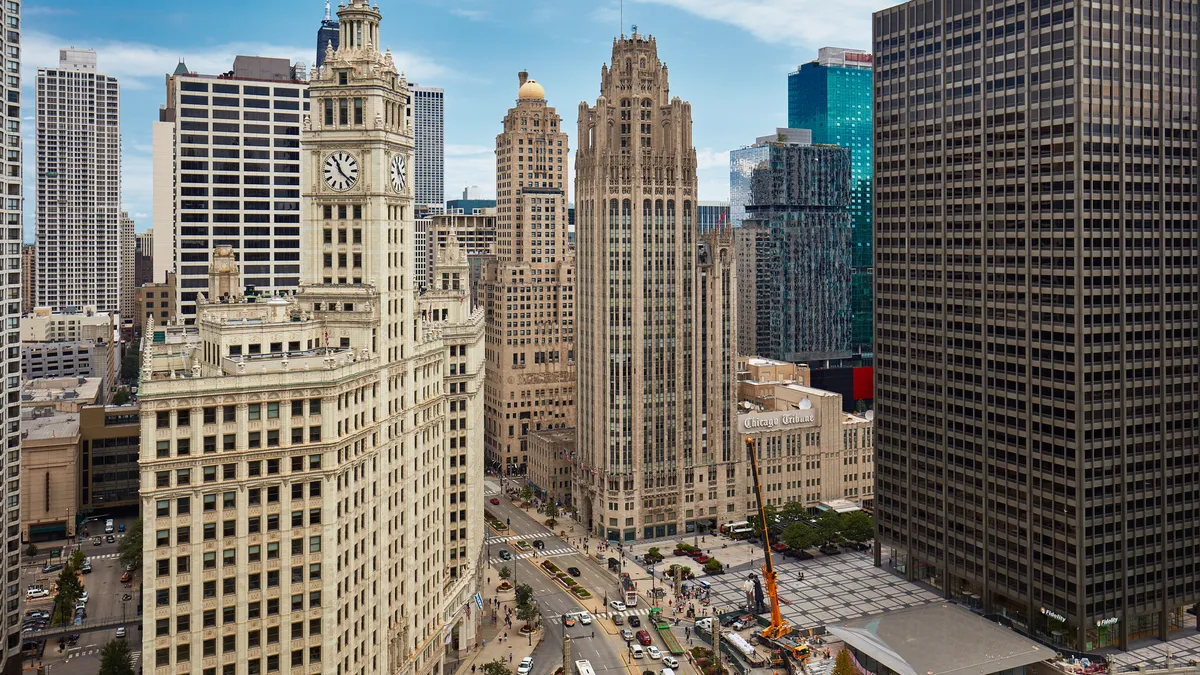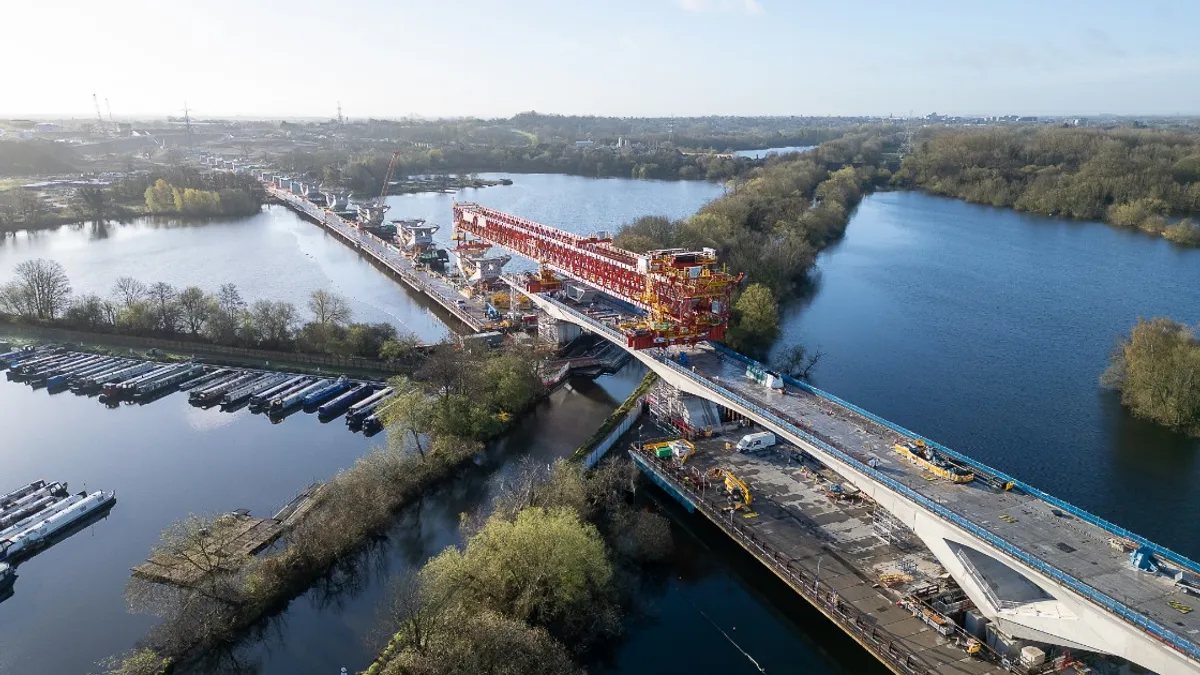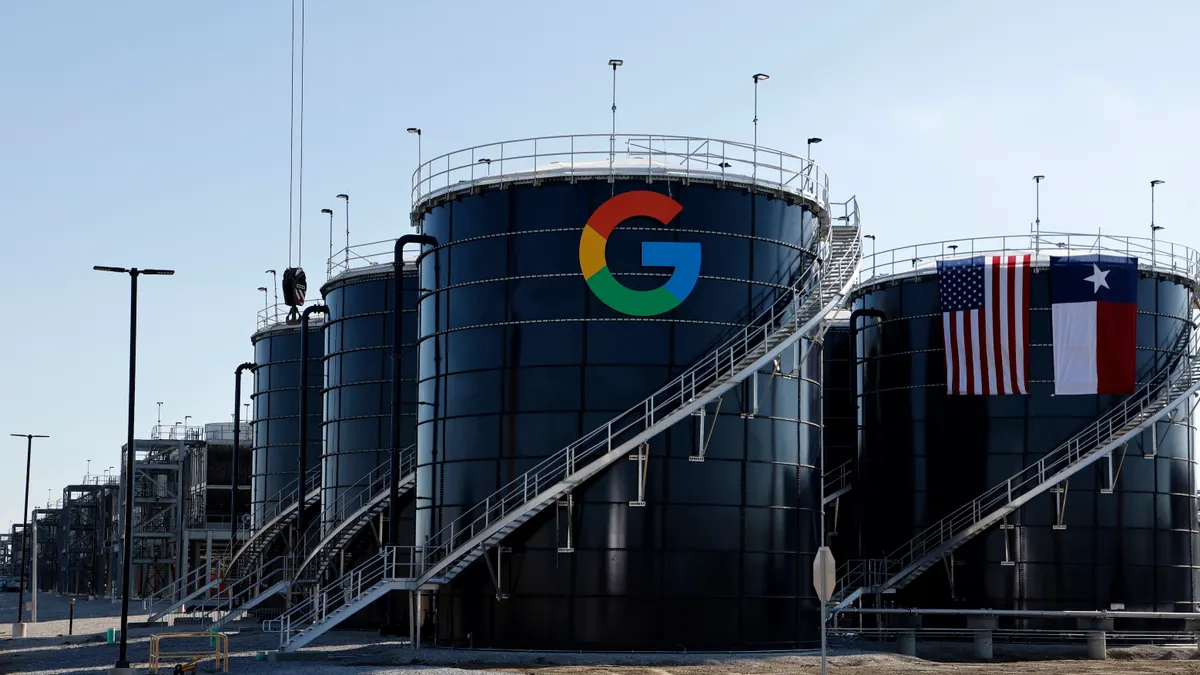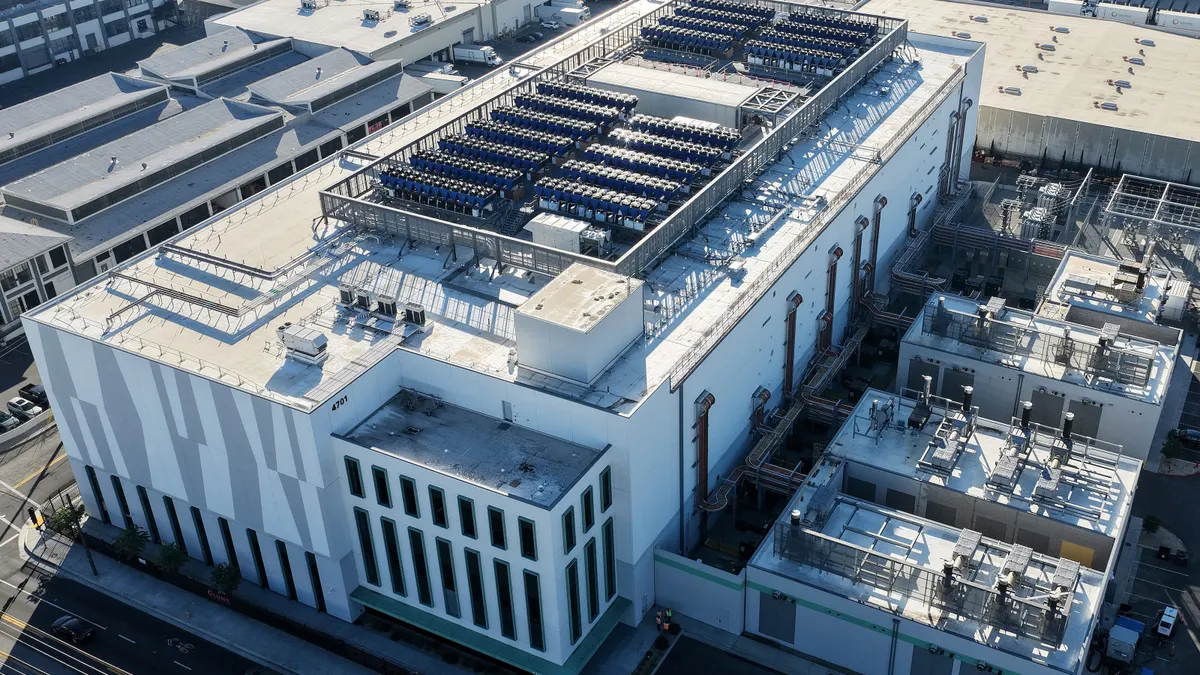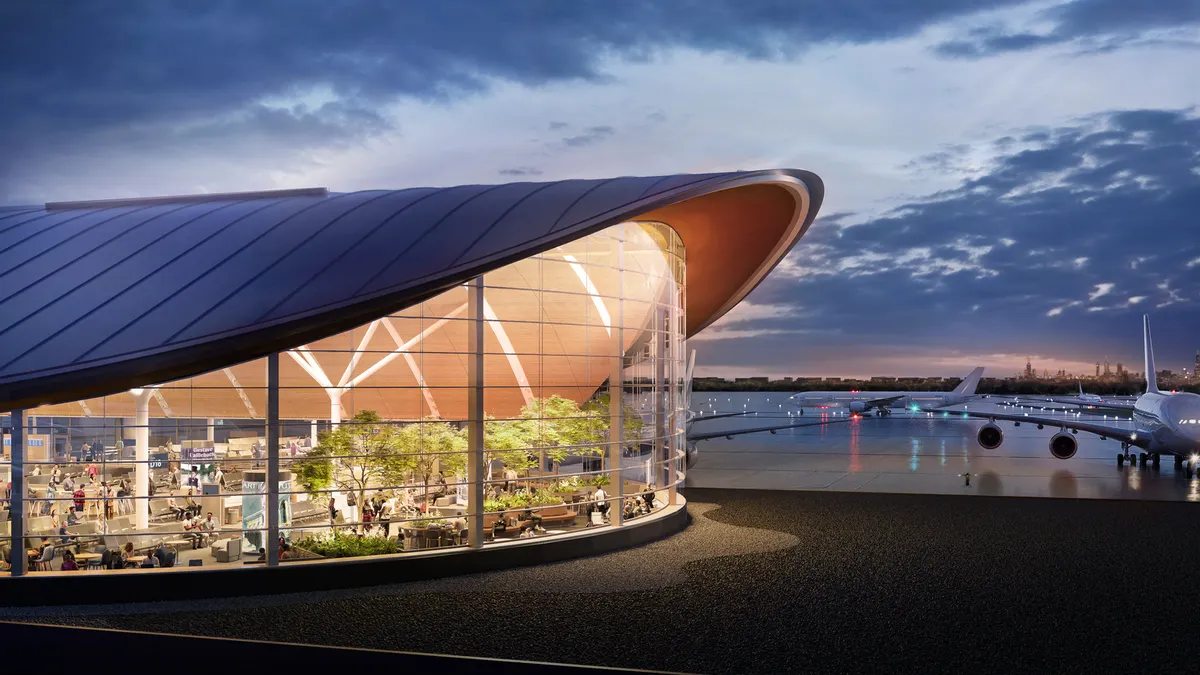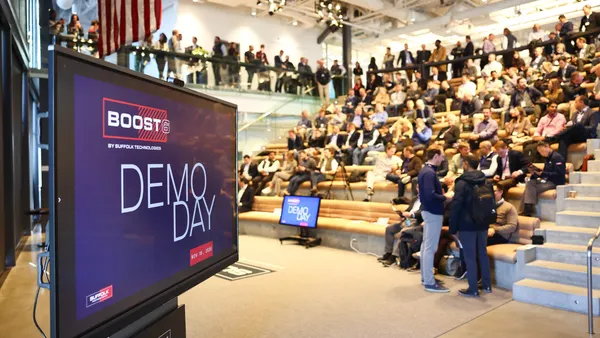For Jeff Arfsten, managing director and chief operating officer of Lendlease Construction US, choosing a career in construction was fate. "It’s in my blood. My family is rich and deep in the construction industry," he said. "I guess I was destined to be in the industry."
Arfsten, who will celebrate his 40th anniversary with the construction and development giant this year, has witnessed firsthand the ever-evolving construction business — despite the industry's notorious resistance to change. From new project delivery methods, to a greater emphasis on safety, to a weaker union presence in some major cities, the industry is focusing on ways to improve efficiencies while also dealing with the ramifications of a lack of skilled talent and uncertain economic conditions.
In an in-depth interview with Construction Dive, Arfsten describes his experience in the construction industry as it struggles to retain talent, improve safety and keep up with changes in client demands.
Editor's note: This interview has been edited and condensed for clarity.
In your 40 years with Lendlease and in the industry, what are some of the biggest changes you’ve seen in construction?
ARFSTEN: Probably the very first thing is around safety. I think when I started my career and the progression of my career, it’s really the past 10 to 12 years ... the commitment that I believe all construction companies and subcontractors have continued to improve on safety.
Are there any new technologies that Lendlease is starting to experiment with?
ARFSTEN: I think modularization is here and continues to advance. We’re seeing a lot of it in the healthcare industry. We’re starting to look at it in the residential type sectors, whether or not you can start to modularize bathrooms and the likes. The other thing we’re involved in, and it’s a bit of a new one for us, is the utilization of cross-laminated timber, CLT, as an alternative to structures in low-rise residential. We just completed our first one at the Redstone arsenal project. We did a small hotel for the Department of Defense.
Lendlease operates in several markets across the U.S. How does the construction process differ in those different cities?
ARFSTEN: There are geographic differences, means, methods, related to construction practice itself, that vary. You also have some of the different markets, whether you’re in a union or nonunion environment. There are differences geographically. By way of example, we’ve got unique things related to the West Coast. You have much more structural considerations, the seismic design requirements.
Is Lendlease typically a union employer?
ARFSTEN: We really operate based on market conditions. New York, Boston, Chicago, San Francisco, they’re heavily union-controlled. You get into Washington, even LA, it’s more merit shop, where there’s union/nonunion working together. So you actually have labor harmony occurring.
There have been reports that unions are losing their stronghold in cities like New York and somewhat in Boston. Have you seen that occurring?
ARFSTEN: In New York, absolutely. There is a vast amount of nonunion construction going on, predominantly in the Brooklyn area. And it is starting to migrate into Manhattan.
Do you think that's a positive thing for the market?
ARFSTEN: Well, yes from a cost perspective. But that brings some challenges. If you look at the size and the scale of the projects, the nonunion subcontractor base formation in what historically has been union markets. It’s a challenge if you’re into it to make sure that you have the capacity of nonunion subs that can undertake some of the challenging projects that are out there. So making sure you understand the breadth, the depth and the capability is a challenge.
Is there a certain market where you’d say is your favorite to build?
ARFSTEN: I like all the major cities. Washington, Boston, New York, Chicago, LA, San Francisco. It’s a little bit easier to weather the market downturns because the local economies are large enough where you can sustain your presence in down times. It becomes difficult in down markets to be in the smaller geographic locations because the local economies usually cycle down just as much as the market does.
What are some of the biggest challenges the construction industry is facing right now?
ARFSTEN: I think we have our ongoing quest around safety. I think the challenge, it’s more of an opportunity, is how we can continue to penetrate to touch the actual workforce. We’re spending a lot of time in the front end of the jobs around planning safety as much as we plan for the project. It’s how do you operationalize safety into what it is you do.
You also have the continued challenge around talent, finding the right people. That’s not necessarily a new challenge, but it’s always an ongoing challenge. In certain geographies, those that are in somewhat of a heated market condition, you have the challenge of the skilled workforce. That even becomes more interesting coming out of the (Great Recession). There’s a lot of guys that didn’t return to the construction industry, especially union guys. You’ve got the continued challenge of both talent for us as well as skilled labor.
Do you think the industry has had a hard time attracting younger people?
ARFSTEN: Not necessarily. The question is, are they going to stay? It’s up to the company, but it’s also up to them. The younger talent we bring in and recruit, they’re apt to change careers ... not necessarily change employers. We’ve had quite a few young folks that are with us for three to five years. It’s not that they’re leaving to go work for a competitor. They’re literally changing their careers.
Are there any other major trends in the industry that you think are disrupting the way construction companies usually operate?
ARFSTEN: In terms of delivery or services being sought, I think we’re starting to see more in the United States in terms of privatization, or P3. I see that as something that’s going to continue to grow as a delivery method. And that also promotes more design-build. I also think there’s a little uptick in public sector work, which is another sector that does utilize design-build. The other delivery method we’re starting to see and participate in is the integrated project delivery and lean construction, which is more an aggregation of the key parties and formation of a contract that is more gain share-related, focused on transparency and accountability.
Do you think design-build and IPD create more successful projects?
ARFSTEN: I would say it’s driven by the project and the desired outcomes of the client. I don’t know if it’s something the industry drives. I think it should be more thought through, in terms of what is the project and what would be the best delivery method to achieve the outcomes of the client.
How would you describe the current environment of the construction industry?
ARFSTEN: Stable is the way I would describe it right now. I think over the next three-to five-year horizon, it should continue to be stable. Some geographies might pick up a bit. But you’ve got to keep things in perspective with some of the global things going on. Whether they’re related to (the U.K). We also have a very interesting presidential election coming up that I’m sure is going to have some influence on the world we live and operate in. So while I’m being optimistic, I think it should stay stable. But there are some concerns out there.






